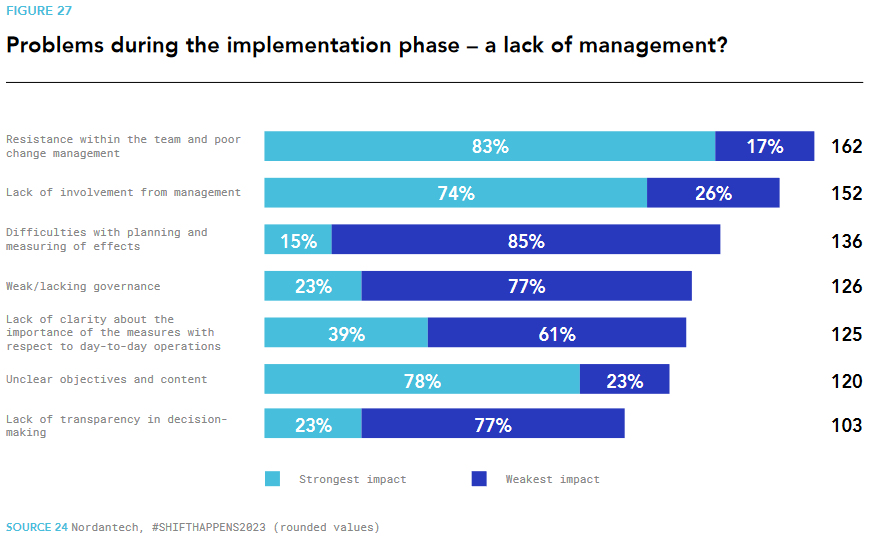In the dynamic landscape of project portfolio management (PPM), staying ahead requires more than just effective planning; it demands a robust PPM software solution. As Project Management Office (PMO) members, your role in driving organizational success is pivotal. In this article, we'll explore the key insights into selecting and implementing Software as a Service (SaaS) solutions for PPM, empowering PMO members to make informed decisions and lead their teams towards efficiency and excellence.
Are you fascinated by the topic of project portfolio management and would like to learn more about it?
Our comprehensive guide "Project Portfolio Management - An Introduction For Practitioners With Little Time On Their Hands" will deepen your knowledge with precise details and analyses.
First and foremost: if you can, keep it SaaS
Before diving into the world of SaaS solutions for your portfolio management, it's essential to have a clear understanding of Project Portfolio Management. PPM is not merely about managing individual projects but involves strategically aligning and prioritizing projects to meet organizational goals. Effective PPM enhances decision-making processes, resource allocation, and overall project success.
Traditional on-premise solutions are giving way to the flexibility and scalability offered by SaaS solutions. SaaS PPM tools provide PMO members with the advantage of accessibility, real-time collaboration, and seamless updates. As the demand for remote work increases in many teams, the cloud-based nature of SaaS aligns perfectly with the evolving needs of modern project management. And pretty important too, SaaS tools often are far more easy to setup and implement than on-premise software solutions.

Features a suitable lightweight PPM software should provide
When it comes to selecting a Project Portfolio Management (PPM) tool, it's crucial to keep the target audience, the PMO, at the forefront of consideration. Several key aspects should be taken into account during the tool selection process.
Aggregation into Project Portfolio:
PPM tools should facilitate the planning, tracking, and reporting of multiple projects with complex measures contributing to strategic goals simultaneously. The emphasis is on Project Portfolio Management rather than project management.
Drilldown Capability:
While providing an aggregated overview of the projects, a PPM tool should also allow for a detailed drilldown into individual portfolio components, enabling effective prioritization.
Segments & Clusters:
Complex project portfolio structures should be easily represented, such as clustering measures based on impact direction, priority, organizational hierarchy, or other relevant aspects for convenient segmentation.
Budget & Benefit Tracking:
To plan and measure quantitative project outcomes during a transformation, the tool should support the planning and tracking of financial and other effects, simplifying complex calculation structures.
Reporting & Analysis:
Essential portfolio reports, especially those for steering committees, should be easily accessible at any time with a simple click. Whilst real time dashboards are great, C-Levels often ask for classic PowerPoint slides. So if the tool happens to export reports to PowerPoint, it's quite a plus and will save your team a lot of time.
Quick Setup:
Particularly in transformation scenarios, the tool must be deployable from day one, with a setup process that doesn't consume excessive time. Cloud solutions are advantageous in this regard, being quickly deployable compared to on-premise alternatives.
Configuration, not necessarily customization:
Oftentimes, individual processes during project portfolio management are considered quite special and unique. Truth be told... they more often than not aren't. This is what is often referred to as the Special Snowflake Syndrome - which if adhered to, results in customization demands. Keep it simple and run with the best practice. Your software solution should too. Namely by offering necessary configurations (e.g. phases, budget types, tags and so on).
Intuitive Design:
Given that PPM work occurs alongside daily operations, the tool should have an intuitive design to minimize the time employees spend navigating it, especially during the initial project stages.
Integrations:
Although not immediately critical, a good PPM tool should offer standard integrations, such as with Business Intelligence tools.
Other Key Considerations in Selecting SaaS PPM solutions
Scalability: Ensure that the chosen SaaS solution can scale with the growing needs of your organization and your team. Whether you're a small PMO or a large enterprise, the PPM tool should adapt to the changing scope and complexity of your projects.
Data Security and Compliance: As custodians of sensitive project data, PMO members must prioritize security in their project portfolio management. Choose a SaaS software solution that adheres to industry-standard security practices and compliance regulations relevant to your organization.
A tool is just a tool - management is key
While a good tool is a catalyst, it's not the sole solution for a running project portfolio. Other success factors, particularly transformation management, play a more significant role. As studies like #SHIFTHAPPENS2023 reveal, common challenges include team resistance, poor change management, lack of involvement at the leadership level, unclear goals, and ambiguous prioritization. A successful PMO can address these issues, by acting as a transformation service provider, maintaining the transformation through active management, and regular reporting to relevant stakeholders. The introduction of a tool provides an ideal foundation to establish necessary structures and minimize administrative efforts during implementation.

In the ever-evolving landscape of project management, the right SaaS PPM software solution can be a game-changer for PMO members. By considering scalability, integration capabilities, user-friendliness, customization options, and security, PMOs can select a tool that aligns seamlessly with their project portfolio management objectives. Implementing best practices, such as early stakeholder engagement, comprehensive training, phased rollouts, and continuous improvement, ensures a successful transition and sets the stage for enhanced project portfolio management. As PMO members, your role in driving organizational project success through informed SaaS PPM decisions is more critical than ever, and with the right insights, you're well-equipped to navigate the SaaS seas with your team.

